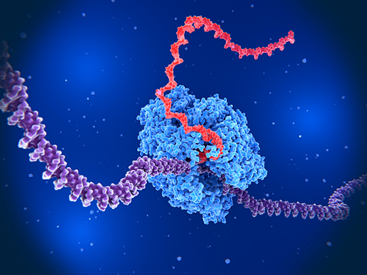Regulatory Guidance for Oligonucleotide Bioanalysis in Drug Development
The unique physicochemical properties of oligonucleotides require the use of specialized bioanalytical approaches, with key considerations including selectivity and specificity, sensitivity, stability, and matrix effects. Addressing these factors means bioanalytical methods can effectively differentiate oligonucleotides from endogenous nucleic acids and metabolites, quantify low concentrations in biological matrices, and assess oligonucleotide stability.
Beyond bioanalysis, understanding the mechanism of action is equally important, as different classes of oligonucleotides—such as antisense oligonucleotides (ASOs)—interact with mRNA in distinct ways to regulate gene expression. ASOs typically function by blocking protein translation or altering splicing, leading to varied mechanisms of action and toxicological profiles.

Researchers must characterize the anti-drug-antibody (ADA) response in preclinical and clinical studies and report any ADA-positive samples as a risk-based approach.
Regulatory Considerations for Oligonucleotide Drug Development and Safety
In 2024, the U.S. Food and Drug Administration (FDA) issued two guidance documents outlining the necessary evaluations during the clinical development of oligonucleotide therapeutics: “Clinical Pharmacology Considerations for the Development of Oligonucleotide Therapeutics” and “Nonclinical Safety Assessment of Oligonucleotide-Based Therapeutics”. These documents provide recommendations and considerations for clinical pharmacology, nonclinical safety assessments, and bioanalytical method validation.
FDA: Clinical Pharmacology Considerations for the Development of Oligonucleotide Therapeutics
This guidance provides recommendations on evaluating QTc interval prolongation, assessing immunogenicity risks—as several factors can impact immunogenicity, such as their conjugation with other moieties, delivery approach or patient population—and understanding the impact of hepatic and renal impairment on drug metabolism. It also outlines recommendations for drug-drug interaction assessments during clinical development, such as the assessment of appropriate biomarkers that reflect modulation of the target protein.
FDA: Nonclinical Safety Assessment of Oligonucleotide-Based Therapeutics
Similarly, the “Nonclinical Safety Assessment of Oligonucleotide-Based Therapeutics” guidance focuses on safety evaluations, including study design considerations and safety pharmacology assessments to better illustrate potential toxicological risks. The guidance emphasizes evaluating in vitro plasma protein binding data for both animals and humans before initiating human studies, while noting that in vitro metabolite assessments are not essential at the start of clinical development.

Scientists must determine if the hybridization ELISA method is selective for the parent compound, or if metabolites selectively quantify the parent compound.
Altasciences utilizes a range of bioanalytical techniques, including hybridization-based assays, LC-MS, and ELISA, to support oligonucleotide drug development and regulatory approval. Our process for method validation adheres to the principles outlined in the FDA’s “M10 Bioanalytical Method Validation and Study Sample Analysis” guidance to ensure reliability and reproducibility.
Oligonucleotide Safety Assessments in Nonclinical Toxicology Studies
Oligonucleotide therapeutics can exhibit diverse leading to varied toxicological profiles. These risks typically fall into three categories:
- On-Target Effects: ASOs can unintentionally bind to partially complementary non-target nucleic acids, leading to unintended gene regulation or transcript degradation. These interactions, driven by Watson-Crick base pairing, may contribute to unintended biological effects and potential toxicities.
- Off-Target Effects: Beyond sequence complementarity, ASOs can also interact with cellular proteins or other molecules through mechanisms unrelated to base pairing. These interactions may disrupt protein function, trigger immune responses, or contribute to other toxicological risks.
- Immunogenicity: While oligonucleotides are typically non-immunogenic, modifications or conjugations (e.g., to ligands or linkers) may elicit immune responses. Assessing the risk of anti-drug antibody (ADA) formations is crucial, especially if the oligonucleotide has similarities to endogenous molecules, which could lead to autoimmunity.
The FDA's draft guidance on nonclinical safety assessment calls for tailored toxicology studies to address these potential risks. The guidance ensures that these targeted evaluations help identify and mitigate safety concerns early in the development process, supporting the safe progression of oligonucleotide therapies into clinical trials.
Additionally, the guidance underscores the need for assessments that consider factors such as dose-response relationships, duration of exposure, and potential for cumulative effects, all of which contribute to a more complete understanding of the therapeutic's efficacy. By employing these specialized studies, drug developers can produce more reliable safety data, which is crucial for regulatory submission and approval.
How Altasciences Can Support Your Oligonucleotide Drug Development
As regulatory expectations for oligonucleotide therapeutics evolve, Altasciences’ teams are committed to strictly adhering to guidelines set forth by agencies such as the FDA, EMA, and Health Canada. Our experts stay up to date on all new and evolving regulations to guarantee regulatory compliance in your studies.

An oligonucleotide is a short strand of nucleotides, the building blocks of DNA or RNA, used in genetic research and therapy.
We use validated bioanalytical solutions using LC-MS, hybridization-based assays, and ligand-binding techniques to drive precise quantification, immunogenicity risk assessment, and informed dose selection—critical for pharmacokinetics, biodistribution, and safety evaluations. Our highly sensitive assays quantify oligonucleotides in complex biological matrices, generating robust data for preclinical and clinical studies. With advanced mass spectrometry, we detect and characterize metabolites in preclinical research, while our ligand binding assay platforms enhance sensitivity in clinical studies and improve lower limit of quantitation (LLOQs). This approach ensures accurate, reliable data to support your regulatory submissions and accelerate oligonucleotide therapeutic development.
Have questions about your oligonucleotide therapeutic studies? Get in touch with our experts today.
This article was first published in February 2025



